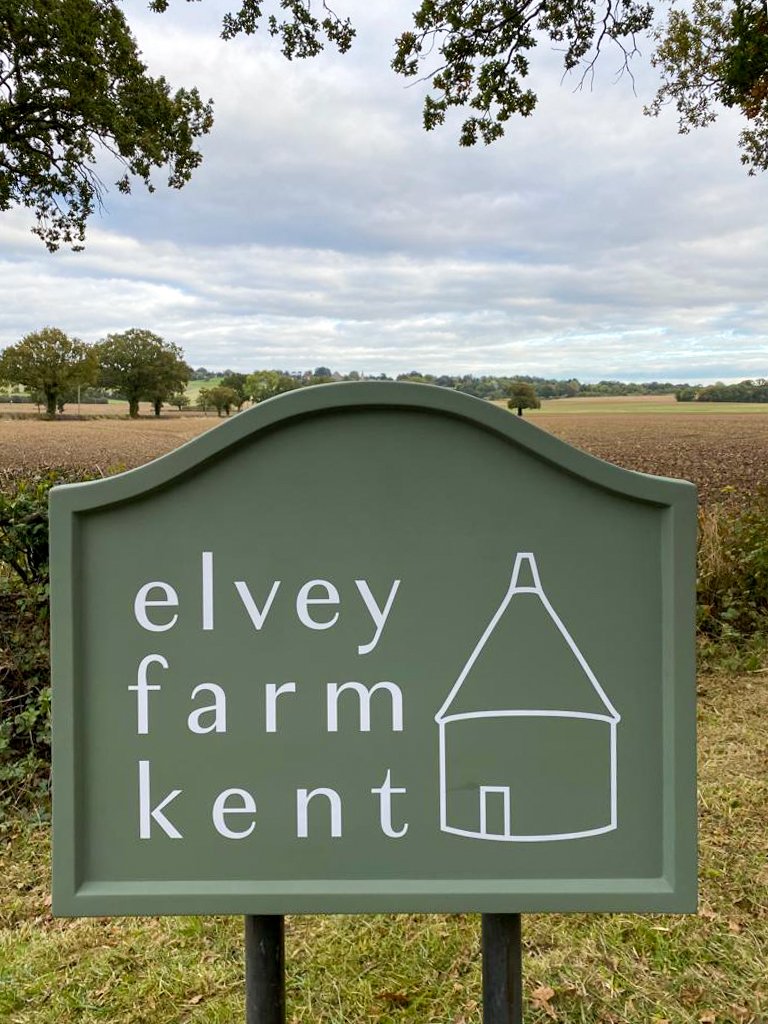history of elvey farm
Elvey Farm is located at the end of a winding lane, nestled in the heart of the Kentish countryside, betwixt the historic villages of Pluckley and Egerton. It is a beautiful Wealden farmstead with medieval origins that is being tastefully refurbished to provide a family home complete with five letting suites and some commercial business space. The group of buildings, steeped in history and natural character, is a hidden treasure waiting to be uncovered. It is a place of peace and tranquillity surrounded by open farmland and connected by a network of footpaths and bridleways including the Greensand Way.
Location
References to Pluckley can be found in the Domesday Book of 1086, at which time it was a more significant settlement than the now considerably larger town of Ashford. The village’s parish church, dedicated to St Nicholas, dates primarily to the 13th and 14th centuries. The Dering Chapel, separated from the rest of the church by two screens and found at the east end of the south aisle, was built in 1475. The nave contains brasses dedicated to members of the Dering family, all of which were made in the 1630s by Sir Edward Dering. (1)
Egerton sits on the Greensand Ridge. A narrow escarpment of dense Greensand forms the north of the parish where the largest single residential area is. The Greensand Way runs in part through the churchyard of St James’s Church in the village. The 13th-century parish church in the Church of England exists which is dedicated to the disciple of Jesus of Nazareth, Saint James. It has the highest grading in the national scheme of listed buildings, Grade I. (2)
the farm and its history
The farmhouse at Elvey Farm is a Grade II listed building. Both the National Heritage List for England and the Kent Historic Environment Record ( HER ) list the property as ‘ Elvy ‘. The listing entry for the house reads ‘ C15 to C16 L-shaped timber-framed building, refaced with red brick on the ground floor and tile-hung above. Hipped tiled roof. Casement windows, 4 windows facing west, 2 windows facing south. King post roof inside’. The Kent HER describes the main construction periods of the farmhouse as medieval to post-medieval, dating from 1400 – 1540 (HER Ref: TQ94 NW97). (3)
The 15th-century Farmhouse has three Dering windows – two facing south and one facing east. Legend has it that back in the 19th century, the local squire, Sir Edward Dering, decided that round-arched windows would bring luck. So, with laudable zeal, he had every window in the village converted to be circular-headed.
The farm was bought in the early 1960s by the Wilmer family and remained in their ownership until sold in 2006. The farm was originally run by Frederic Wilmer but was passed on to his daughters Felicity and Ann in 1975. Felicity’s husband Vernon Harris then bought out the half belonging to Ann. To use the words of Vernon ‘ the property was in a pretty ruinous state ‘ and consequently he and Felicity set about a series of conversions that went through until the end of 1984. The estate is built around a 15th-century hall, which Vernon and Felicity made into a five-bedroom home. They also converted the oast house, barn and stables into hotel suites creating 11 bedrooms. The oast house was reroofed with original tiles and the barn had to be rebuilt inside. Recovered beams were used to create a suspended floor, with a large function-cum-dining room beneath three bedrooms. (4)
Simon Peek and Jeff Moody purchased the property in 2006 and continued the programme of restoration including upgrading the bathrooms in the Stables, refitting the commercial kitchen and converting the Granary building into two luxury letting suites. Elvey Farm then thrived as a wedding venue, boutique country hotel and restaurant until they decided to sell in 2015. The property was taken on by a tenant who continued to run a similar business although three glamping units situated in the paddocks were added to the overnight accommodation offer.
Within the office, we have a plaque in memory of Flying Officer Oswald St John Pigg, No 72 Squadron RAF, whose Spitfire crashed at the top of the paddock running up from the Stables on 1st September 1940, at the height of the Battle of Britain. He was just 22 years old. One of The Few. There are also some photographs and other historical information as well as a piston from the Merlin engine that was recovered from the crash site.
(1) & (2) – Wikipedia
(3) – Building Histories ( April 26th 2020 )
(4) – The Times ( November 3rd 2002 )
About Elvey Farm Kent
Take a trip to our about page to learn a little more of our backstory, plans and generally about us.



